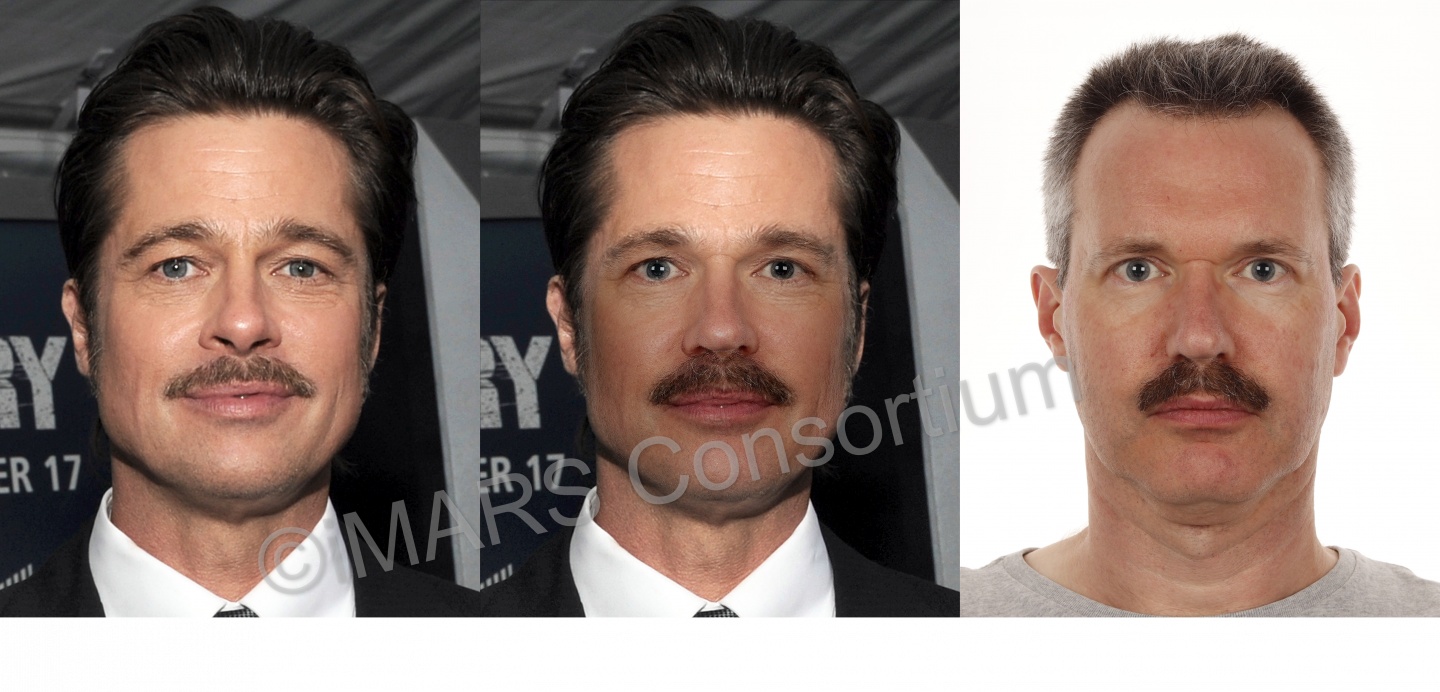Whilst iMARS is at the early stages of its research and development, its origins started over 7 years ago and the journey of its concept is fascinating. How was iMARS born? Where has it gone so far? And where is it going next? From FP7, to internal projects, to H2020 projects and beyond, here is the story of a collaborative research concept from inception to realisation.
Earlier this month, we sat down with Davide Maltoni, Annalisa Franco and Matteo Ferrara, all members of the Biometric Systems Laboratory of the University of Bologna. When in 2014 they presented to the FIDELITY project’s Advisory Board the UBO team’s findings on a possible security threat for ePassports related to the use of morphed face images, we could have heard a pin drop.
“The presentation certainly captured their interest; nobody suspected that this could be an issue. As the presentation progressed, I saw their faces getting more and more serious…” Annalisa Franco recalled. At the time, biometric passports had been introduced for about 10 years and the FP7 funded FIDELITY project was analysing shortcomings and vulnerabilities in the ePassport lifecycle, in order to develop technical solutions and recommendations.
“I was working on face recognition at the time with my colleague Matteo Ferrara, under the guidance of Prof. Davide Maltoni”. In FIDELITY, they were involved in efficient fingerprint recognition in contact-based and on-the-fly ID inspection terminals, biometric performance evaluation and in the analysis of the possible effects of face image manipulation on automatic recognition accuracy.
“Face morphing was a known technique in computer vision, able to produce a face image from two or more subjects including features of all of them; however its effects on face verification had not yet been well investigated. At the beginning, we were quite sceptic. We started to produce those images as a joke just to see what happened, mixing our faces with famous actors like Brad Pitt”. The team then assessed the effects on face recognition systems available at the time using more extensive experimentation. “This wider set of experiments confirmed our concerns and we decided it was important to share our findings with the FIDELITY Advisory Board in 2014”.

The resulting paper by Matteo Ferrara, Annalisa Franco and Davide Maltoni stimulated the scientific community – it was clear that more research was needed, as well as urgent actions to strengthen security systems, precisely at the time of the closure of FP7 and start of H2020. A European Commission funded project, SOTAMD (State of the Art of Morphing Detection) followed in the tracks of FIDELITY, to build a large dataset of morphed images and evaluate state of the art of morphing detection mechanisms. The project mimicked the automated border control gate scenario, where the live face image of the gate is compared against the image in the chip of the passport. In parallel, a lot of work was done privately by various governmental key actors in Europe, and beyond, to analyse the problem and verify the effective risk. The Dutch National Office for Identity Data started working with the German BKA and BSI as well as other international partners to analyse the problem and on early solutions to detect such morphing attacks.
These research efforts fostered the growth of a strong community network, sharing their findings and discussing common goals. More work was still needed for effective and robust detection solutions, but also for prevention by means of live capture at the passport application, which had only been addressed by very few EU member states. In 2017 the University of Twente in cooperation with the Dutch Ministry of the Interior and Kingdom Relations and the Hochschule Darmstadt organized in The Hague the first workshop entirely dedicated to face morphing. During that meeting, a small group of key partners (Christoph Busch, Uwe Seidel, Davide Maltoni, Luuk Spreeuwers, Raymond Veldhuis, Fons Knopjes to mention a few) discussed a joint research proposal focused on face morphing. This is where the iMARS concept started to solidify, and the group joined efforts in 2019 along with industrial partners and security practitioners to develop a project proposal and find funding. Eventually, the EU’s Horizon 2020 funding programme granted the iMARS project, and the work started in September 2020 under the coordination of Idemia Identity & Security France.
“iMARS is a big opportunity for all of us! The project is strongly focused on face morphing and the main aim is to develop and test in a real operational scenario effective and robust solutions. It gives us the opportunity to exit from our laboratories, to establish a connection with real operative conditions that is absolutely necessary to develop solutions ready for deployment. The number and different nature of the partners involved (universities, end users, companies) is the key for the success of the project.” – Annalisa Franco
ID document security is a journey. The R&D community must constantly adapt to evolving threats. “The path is difficult, morphing detection is a very complex task but it represents an exciting research challenge. We understand that there is the urgent need for practical and deployable solutions and this makes the challenge even bigger.” As we are about to enter our second year of the project, there is still so much more to look forward to until its finalisation in August 2024.
I think that iMARS will let us to do a big step forward, I’m very positive and optimistic on the outcomes of this project and happy to have the opportunity to contribute.”
Stay up to date with our progress, and sign up to our Newsletter.